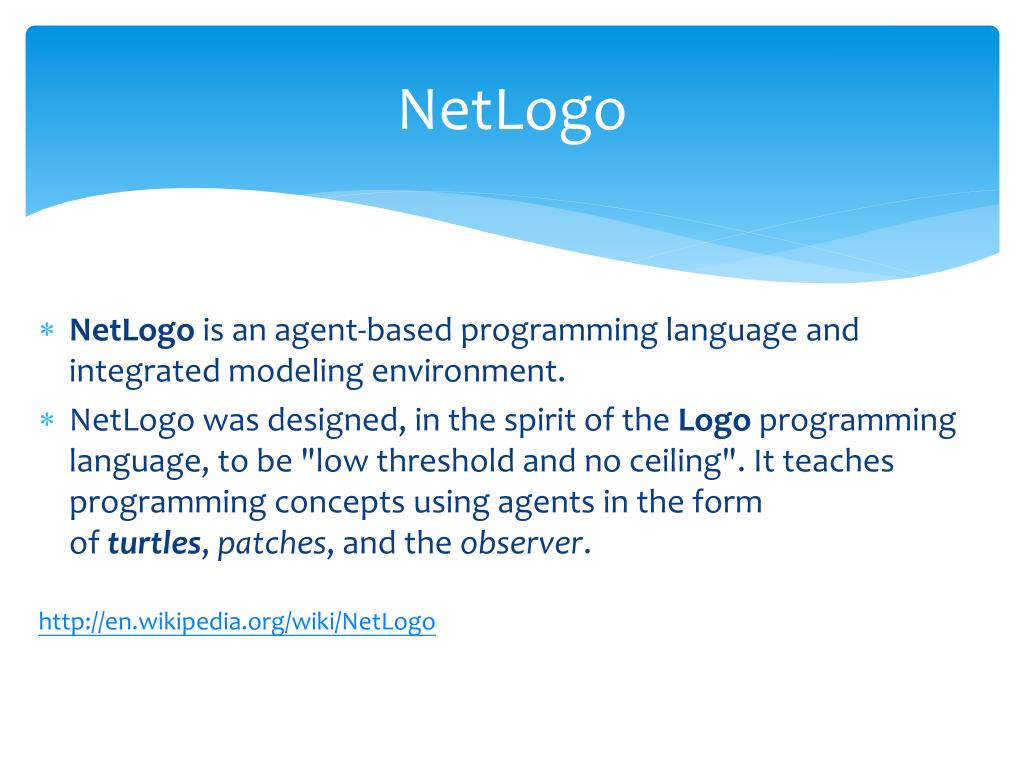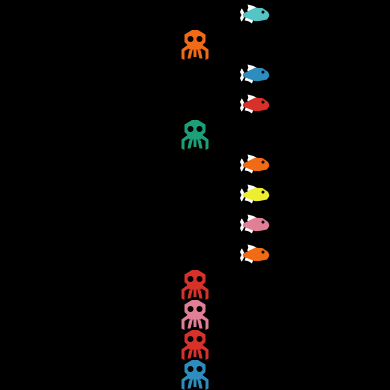


This turtle creates number new turtles, each identical to its parent, and asks the new turtle(s) that have been hatched to run commands. WHAT IS IT This model was built to test and demonstrate the functionality of the GIS NetLogo extension. The hatch command is a NetLogo primitive which looks like this: hatch number commands.
#NETLOGO EXAMPLES HOW TO#
GIS Gradient Example provides another example of how to use the GIS extension. GIS General Examples Note: If you download the NetLogo application, every model in the Models Library is included.
#NETLOGO EXAMPLES CODE#
See the other GIS code example, GIS Gradient Example, for an example of this technique. This model doesn't do anything particularly interesting, but you can easily copy some of the code from the Code tab into a new model that uses your own data, or does something interesting with the included data. For example, you could modify highlight-large-cities to highlight small cities instead, by replacing gis:find-greater-than with gis:find-less-than. Most of the commands in the Code tab can be easily modified to display slightly different information. See the code tab for specific information about how the different buttons work. You can then use all other features of the mode. Select a map projection from the projection menu, then click the setup button. A simple modification of a NetLogo model for the subject 'Computacin Social y Personalizacin' ('Social Computing and Personalisation') of the 'Grado en Ciencia de Datos e Inteligencia Artificial' ('Degree in Data Science and Artificial Intelligence') of the Universidad Politcnica de Madrid (UPM). example the speed limit and the possibility of. Usually, the observer uses ask to ask all turtles or all patches to run commands. While the roads are only fig- urative, the nodes play an active role in the simulation, deciding for. The R package Viridis provides color palettes that are optimized to represent data. In this first post, I will demonstrate how you can use R colorramps, such as the wonderful viridis colorramp, directly in your NetLogo models.
#NETLOGO EXAMPLES PATCH#
It provides a collection of different ways to draw the data to the drawing layer, run queries on it, and transform it into NetLogo Turtles or Patch data. NetLogo uses the ask command to specify instructions that are to be run by turtles, patches or links. This tutorial concerns the application of Agent-Based Modeling to Business Process Management, by introducing NetLogo platoform and practical examples. Most of this will be related to NetLogo and R and the combination of both tools. This model loads four different GIS datasets: a point file of world cities, a polyline file of world rivers, a polygon file of countries, and a raster file of surface elevation. Implementation examples of the asynchronous techniques that use the two multi-agent system. This model was built to test and demonstrate the functionality of the GIS NetLogo extension. Note: If you download the NetLogo application, every model in the Models Library is included. (back to the library) GIS General Examples
NetLogo Models Library: GIS General Examples


 0 kommentar(er)
0 kommentar(er)
